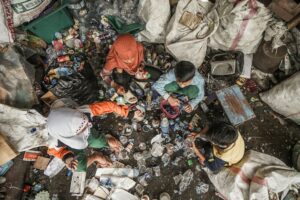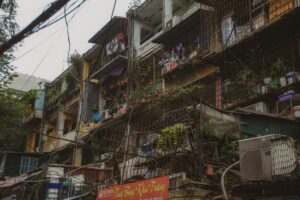The Slum Outside Elusive Dharavi In India
Introduction:
Dharavi, in the heart of Mumbai, is supposed to represent the quintessential Asian slum. Crowded streets and busy markets; domestic workshops cheek by jowl with sweatshops producing both real and fake Pepe jeans; brick houses rising as high as their microscopic footprints allow; high-rises mushrooming here and there like gigantic shacks; schools in Kannada, Tamil, Hindi, English, Marathi, Urdu, and other languages, usually with more than 50 pupils per class; temples of every Buddhist and Hindu denomination; flamboyant mosques so crowded that people have to pray on the streets, old churches with full congregations.

Dharavi invariably confuses those eager to capture its reality in shorthand. Visitors looking for an essence of the place often land on its edges and corners, in spots that most Dharavi residents themselves have seen only on TV. They may be rewarded for their intrepidness by the sight of barefoot children walking on water pipes against the obligatory backdrop of garbage – a cliché that resonates so powerfully with familiar discourses on poverty and inequality that it obliterates the depth and complexity of the place. Dharavi is diverse and rapidly transforming, and it deceives as much as it overwhelms. It is an enigma that cannot be resolved by simply labelling it one thing or the other.
Elusive Dharavi In Mumbai India:
In Mumbai, domestic spaces in low-income neighbourhoods often incorporate productive or commercial activities such as cottage industries or retailing. This extreme exploitation of space is often seen as a consequence of poverty: in a context where space is scarce and expensive, its value must be leveraged as intensely as possible. Yet, the relation to space – and by extension to the people who occupy it – is also defined socially and culturally and cannot be reduced to economic imperatives alone.
Throughout South Asia, even in contexts that are not space-poor, the home is not only a personal or family space but easily accommodates visitors and multiple functions. In India, social structures such as the family, community and caste play an important role in income-generation and space-formation. It is fairly common to see children or grandparents helping out at the counter of a shop while the parents are busy elsewhere. Skills, tools and clientele are often passed on from one generation to the next. Community ties facilitate business transactions and transmission, as it is easier to trust people who come from the same village or go to the same temple.
The Tool-house:
What would help Dharavi is a genuine attempt to understand its unique processes and to examine how these translate into built forms. Rather than seeing its structures as makeshift, temporary and a result of ‘informal’ processes, it would be more useful to think of them as belonging to another narrative altogether.
The enmeshing of spatial, social and economic principles in Dharavi is powerfully symbolized by one ubiquitous house type – a structure and a mode of organization that we call the ‘tool-house’. Simply put, the tool-house is a space that is used both for living and for income-generation. And this device is fundamental to the logic that sustains homegrown settlements.
The residents of Dharavi:
The residents of Dharavi have been developing the neighbourhood for generations. Today many of its tool-houses are highly integrated, technologically and economically, into global production and distribution networks, making goods that are sold throughout the world. Dharavi’s development relies on decentralized post-Fordist modes of production where a multiplicity of small units offer just-in-time delivery with minimal inventory.
Tokyo’s rise to prominence in the last decades of the twentieth century was based on the integration of small-scale specialized production and large-scale export-oriented industries. It produced advanced consumer goods by assembling small parts produced through a network of subcontractors operating at different scales.

Conclusion:
The prime motivation behind the redevelopment plan for Dharavi is to create higher land values, and eventually to facilitate a new speculative economy for residential and commercial buildings. Most residents will not gain more legitimacy, money or independence from this process. On the contrary, they will either have to integrate into the new economy as service-providers or leave.
New real-estate development zones subscribe to a certain kind of appropriate built-form – the non-slum structure, which is usually a marketable commodity meant for a speculative market. In cities like Mumbai this process escalates costs and pushes the poor ever further into the corner. The speculative exploitation of Dharavi’s valuable land will convert a living neighbourhood into a dead colony.
Also Read: Housing New York A five borough ten year plan: Affordable Housing for Every New Yorker
